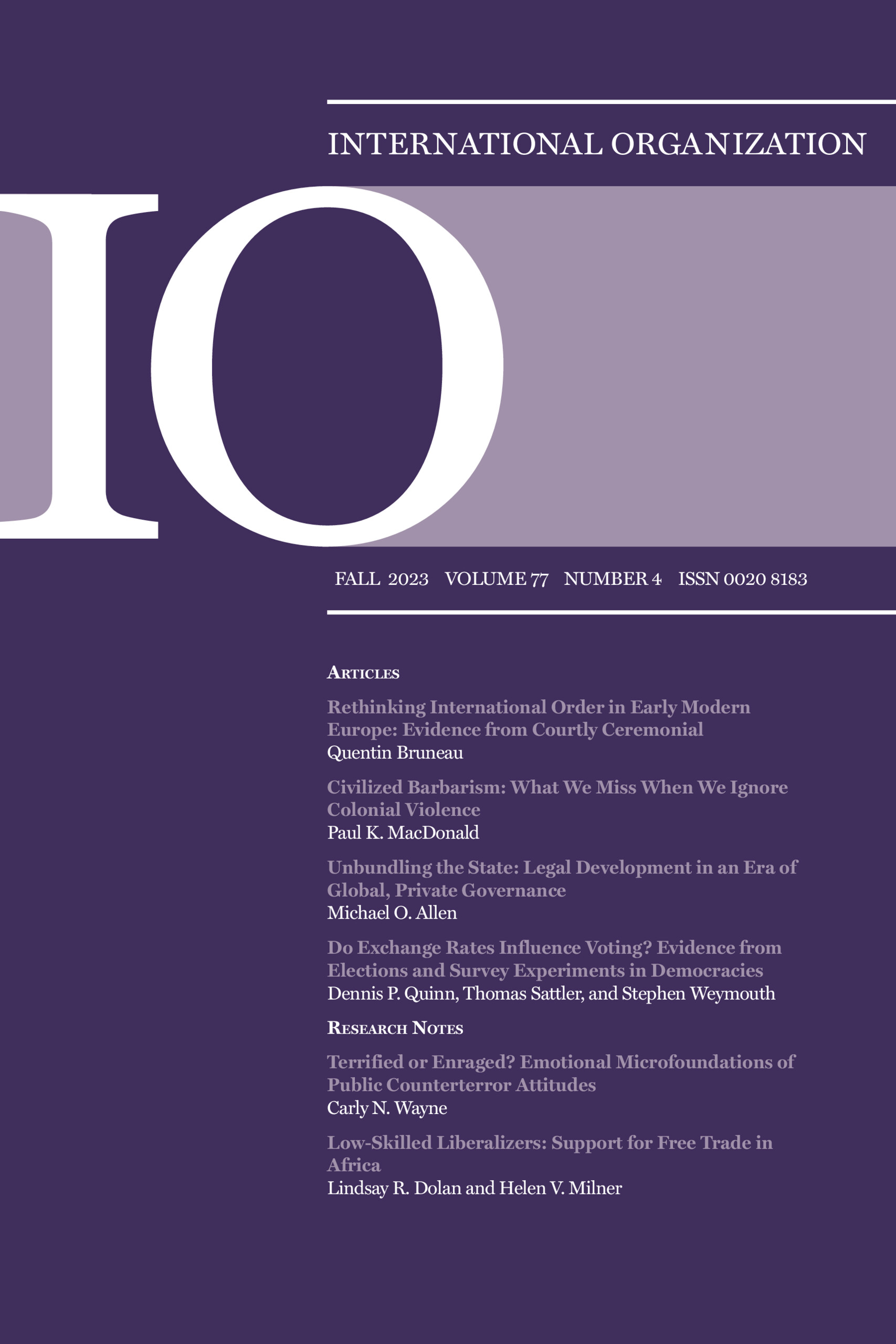非洲的新事物:国家造就奴隶,奴隶造就国家
IF 4.5
1区 社会学
Q1 INTERNATIONAL RELATIONS
引用次数: 0
摘要
在这篇文章中,我解释了奴隶制与非洲国家形成之间的联系,从最初的人口和制度条件到外部需求的转变,个别国家的反应,以及它们的集体系统性后果。从历史上看,非洲统治者面临着独特的挑战:低人口密度优先考虑的是对人民的控制,而不是对领土的控制,内部分裂往往比外部征服更大。对奴隶需求的大规模扩张为非洲统治者提供了更多的机会,利用外部资源进行“由外而内”的国家建设。许多人通过建立高度军事化的掠夺性奴隶制国家来实现这一目标。其集体后果是加剧了系统性不安全。这些发展的时间变化反映了对奴隶需求扩张的地区和历史变化。奴隶制国家首先出现在西非,反映了17世纪末跨大西洋奴隶贸易的扩张,一个世纪后,随着印度洋奴隶贸易的平行增长,奴隶制国家蔓延到东非。这种“由外而内”的国家形成路径与当代后殖民国家形成既有相似之处,又有鲜明对比。本文章由计算机程序翻译,如有差异,请以英文原文为准。
Something New out of Africa: States Made Slaves, Slaves Made States
Abstract In this article I explain a nexus between slavery and state formation in Africa, proceeding from initial demographic and institutional conditions to an external demand shift, individual state responses, and their collective systemic consequences. Historically, African rulers faced distinctive challenges: low population density prioritized control of people more than territory, and internal disintegration was often a greater threat than external conquest. A massive expansion in the demand for slaves offered African rulers increased opportunities to use external resources for “outside-in” state building. Many did so by creating highly militarized predatory slaving states. The collective consequence was heightened systemic insecurity. Variation in the timing of these developments reflected regional and historical variation in the expansion of the demand for slaves. Slaving states appeared first in West Africa, reflecting the late-seventeenth-century expansion of the trans-Atlantic slave trade, before spreading to East Africa a century later, following the parallel later increase in the Indian Ocean slave trade. This “outside-in” path to state formation both parallels and contrasts with contemporary postcolonial state formation.
求助全文
通过发布文献求助,成功后即可免费获取论文全文。
去求助
来源期刊

International Organization
Multiple-
CiteScore
14.50
自引率
1.30%
发文量
25
期刊介绍:
International Organization (IO) is a prominent peer-reviewed journal that comprehensively covers the field of international affairs. Its subject areas encompass foreign policies, international relations, political economy, security policies, environmental disputes, regional integration, alliance patterns, conflict resolution, economic development, and international capital movements. Continuously ranked among the top journals in the field, IO does not publish book reviews but instead features high-quality review essays that survey new developments, synthesize important ideas, and address key issues for future scholarship.
 求助内容:
求助内容: 应助结果提醒方式:
应助结果提醒方式:


